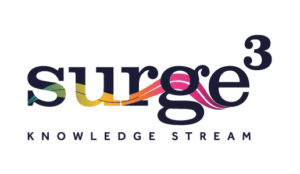Disruptive innovation can hurt – if you’re not the one doing the disrupting. Clay Christensen Disruptors appear as a reaction to consumer dissatisfaction with the status quo, in sectors characterised by complacent incumbents. These incumbents have lost their way or at least have failed to keep their finger on the pulse of consumer expectations …. they have failed to realise which way the wind is blowing. In a world of multiplying customer touch points and rapidly changing customer behaviours becoming, and staying, customer focused is increasingly difficult to do.
Insurance is perhaps a great example of an industry crying out for a true disrupter at scale. Many insurance brands and their messages seem stuck in the 1950s, with key themes of family, duty, financial strength and fear, and often speak in euphemisms, rarely mentioning the products or the true benefits offered … and as a result their customers do not ‘like’ them very much, and this matters because, by and large, we all – either through compulsion or choice – have an insurance policy
Association of British Insurers data shows that the UK insurance industry is the largest in Europe and the third largest in the world. It plays an essential part in the UK’s economic strength. It employs around 315,000 individuals, of which more than a third are employed directly by insurers with the remainder in auxiliary services such as broking BUT how do you think the average insurance customer would respond to the assertion that … “insurance is socially useful – [by working in insurance] you can make a contribution to society”. A recent article argued that a career in insurance is attractive to millennials because it is ‘socially useful’ – that made me stop and think). Maybe there is change in the air!
In a recent FT article – Identity crisis: the insurers moving away from insurance [1] – the discussion was of insurance companies moving away from a conventional insurance ‘offer’ to more of a “services business”… the examples given were of baby-sitting services for people in hospital and counselling for some individuals caught up in a crisis – important I am sure for the individuals involved but somewhat underwhelming as a consumer strategy in the face of – as the article expostulated – a fundamental lack of customer loyalty and a huge amount of disruption as companies like Amazon (it’s always Amazon) redefine customer experience. In this world the customer doesn’t want to buy a product, the customer wants a problem solved, and as Stéphane Guinet, founder and managing partner of Axa’s Kamet, said in the FT article: “The industry will move from risk transfer to more and more services . . . The future will be for the ones who can design and deliver experiences. The risk transfer will be ancillary.”
Will digital services finally change the relationship between insured and insurer? Is this the disruption that allows new firms to emerge or old firms to rise (phoenix like) to the challenge of meeting customers’ expectations with innovative, customised solutions, clear and relevant information, transparent pricing, 24/7 access and crucially build a relationship of trust. Disruptors want to make a radical difference – not protect the status quo. Re-envisioning an insurance business and brand … to become a more high-performing, customer-centric, future-focused company – the key is (as ever) to deliver the right solutions to the right consumers in the right way. A solution they value.
In a 2017 article McKinsey [2] laid out the advantages of ‘digital’ to the insurance industry. It argued 3 key benefits:
- Higher customer satisfaction and increased customer retention will allow insurers to improve profits in their core business and at the same time remove significant cost across the value chain, further increasing customer lifetime value.
- Longer-term growth opportunities will reside in innovative insurance products and protection services – from cybersecurity to products fit for a sharing economy or the gig economy etc.
- Digital technology and the data and analysis it makes available will give insurers the chance to get closer to their customers – and hence develop and offer more tailored products delivered directly in a more timely manner.
It feels to me that 1 and 2 are only really possible if a potential disruptor can get 3 right – putting the customer at the heart of the business is ‘just’ effective marketing
We touched on some of these ideas last year in our ESOMAR paper delivered, with MetLife, at the global congress in Amsterdam (You can find that paper on our website). In this paper we argued that companies that lead are the ones that shape the future, rather than just imagining what the future could be. To challenge perceived wisdom and enable a much more consumer focused organisation to emerge, businesses must envision what new future is needed for the insurance industry to survive, and then take a series of concrete steps to build it. If the goal is to ‘put a dent in the universe’ actions speak louder than words. Being visionary is not a vague abstract aspiration.



